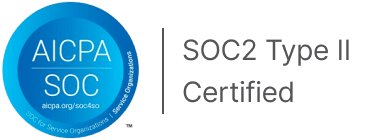Visualize Your Global Supply Chain Network
Multi-Tier Visibility
Custom Pricing and Billing Terms
Visibility + Risk Mapping
Custom Pricing and Billing Terms
Trusted By Industry Leaders




PLAN COMPARISON
Compare Plans and Features
Choose the enterprise plan that best fits your supply chain visibility needs. Whether you need multi-tier visibility or comprehensive risk mapping, our Map solutions provide the insights you need for your global operations.
Multi-Tier Visibility
Visibility + Risk Mapping
Multi-Tier Supply Chain and Value Chain
Risk Mapping
Analytics
Alerts & Monitoring
Exports & Reports
Support
FEATURES
Top Features in Trademo Map
700 Million+
Trade Transactions Analyzed
6 Million+
Global Buyers and Suppliers Data
100 Million+
Multi-tier Relationships Mapped
190+
Countries Covered
FAQs
What is Trademo Map?
Trademo Map is an AI-powered platform offering multi-tier visibility across both upstream and downstream supply chains to help manage risk, ensure compliance, and build resilient global networks.
How does Trademo Map get its data?
Trademo Map sources multiple types of data to build complete value chain profiles, including shipment data such as bills of lading and customs declarations across multiple countries, ownership data from authorized sources to map corporate and beneficial ownership, and risk overlays from sanctions lists, forced labor databases, export control frameworks, and other compliance sources. All of this information is standardized and normalized into comprehensive supply chain profiles.
What data scale does Trademo Map leverage?
The platform is powered by over 700 million trade transactions, covers 6 million global buyers and suppliers, maps more than 100 million multi-tier relationships, and spans 190+ countries.
What types of risks can Trademo Map help detect?
Trademo Map helps detect supply chain risks by screening for forced labor, export-control violations, and sanction exposure, while also identifying concentration risks from over-reliance on certain suppliers or regions and uncovering hidden ownership ties linked to compliance violations
How does Trademo Map provide supply chain visibility?
It maps supplier, distributor, and buyer relationships up to Tier-4, both upstream and downstream, offering visibility across your entire value chain.
What is multi-tier visibility and why is it important?
Multi‑tier visibility means seeing beyond your immediate (tier‑1) suppliers and buyers, into deeper layers of your supply chain. This broader view helps uncover hidden risks, ensure compliance, and strengthen supply chain resilience.
What is supply chain traceability and why is it important?
Supply chain traceability tracks the flow of goods and materials across tiers to verify origin, ensure compliance, and promote ethical sourcing.
What is downstream supply chain management?
Downstream management involves monitoring finished goods as they move from manufacturers through distributors and resellers to customers, ensuring delivery and compliance.
What upstream challenges does Trademo Map address?
It tackles challenges like limited visibility, supplier dependency, and hidden compliance risks through multi-tier mapping, risk screening, and diversification.
How does visualization help with supply chain management?
Visualization identifies chokepoints and dependencies, enabling faster responses to disruptions and more efficient supply chain decisions.
How does Trademo Map compare with other mapping methods?
Unlike traditional approaches such as surveys, spreadsheets, or ERPs, Trademo Map uses AI, a knowledge graph, and trade data to deliver automated, scalable, and deep supply chain insights.
Who can benefit most from using Trademo Map?
Manufacturers, corporates, banks, logistics providers, and compliance teams can use Trademo Map to improve visibility, reduce risks, meet regulatory requirements, and enhance supply chain resilience.
What is Value chain mapping?
Value Chain Mapping is the process of visualizing and analyzing the suppliers, materials, and processes directly tied to your procurement. It focuses on the inputs listed in your bill of materials (BOM) and connects them to the tier-1 suppliers who provide them. This allows businesses to clearly see which suppliers and materials are essential to their operations, without being overwhelmed by the entire supply chain.
What Trademo Map offers for value chain mapping?
Trademo Map simplifies value chain mapping by filtering your supply chain to show only the most relevant suppliers and materials. Beyond visibility, it helps you identify stress points in your network, highlight gaps arising from country-level risks, sanctions or export control risks, and detect potential choke points caused by supplier or geographic concentration. By offering a focused and risk-aware view of your procurement network, TradeMoveMap enables better decision-making, proactive risk management, and stronger supplier relationships.
APIs
Data License
Solutions
Pricing
















